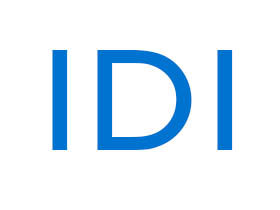Identity Dynamics at Work
The Dow Chemical CaseDow had been struggling to grow at a rate above inflation for several years. An initial assessment led to the conclusion that the company was a strong global business but a weak global brand; no one could put their finger on what it meant to be Dow Chemical. The challenge was to clarify Dow’s identity in order to highlight and unleash the value-creating potential of the whole.
Working with Dow executives, Ackerman focused on determining whether their then- $20 billion in product sales could be traced to end-use markets that cut across their main industrial businesses – chemicals, plastics, and agriproducts – which might reveal a different strategic understanding of the company.
Nine end-use markets were identified including healthcare, building products, water purification, and transportation, among others. Armed with this knowledge, Ackerman concluded that Dow’s core identity – how the company created proprietary value – revolved around its innate drive to constantly improve the essentials of human progress by mastering science and technology.
Dow may have produced chemicals, plastics and agricultural products; but the com- pany was really in the consumer essentials business and had been since its inception, more than a century earlier. The only thing that had changed was how Dow expressed its identity over time. With this insight, a new leadership platform emerged.
The job of building awareness of Dow’s identity posed a company-wide challenge. Working with the company’s management,
Ackerman’s team developed a comprehensive implementation plan – a Global Masterguide – to train regional and local executives and staff how to align operations with the organization’s identity.
The idea of being in the consumer  essentials business led to new ways to drive value creation. One way was to re-think how Dow’s sales force, its commercial directors, approached major customers such as Procter & Gamble and Kimberly-Clark.
essentials business led to new ways to drive value creation. One way was to re-think how Dow’s sales force, its commercial directors, approached major customers such as Procter & Gamble and Kimberly-Clark.
These vital front-line managers could now talk about how Dow served specific end-use consumer markets, This was new information for customers who, previously, knew Dow largely through its various chemical and plastics products. This different frame of reference led to expanded sales relationships, which translated into new opportunities for profitable growth for Dow.
Clarifying Dow’s identity also provided a fresh discipline for analyzing the fit of potential acquisitions and for determining
whether or not to enter new markets and create specific, new products. In one case, Dow was considering buying a company that would have allowed it to enter a fast-growing segment of the fabrics market. Despite attractive economics, the business would not have contributed enough revenue, nor technology advantage, to either of the two end-use markets that it might have served: household and personal use care, or furniture and furnishings. So the acquisition was not pursued.
This is the CEO System in action. Understanding identity-based management sparked renewed momentum for the company. The rewards of doing so not only included enhanced revenue growth, but a more precise framework for talent acquisition, development and promotion. The aim? To reinforce, every day, the benefits identity-based management had brought to Dow.
